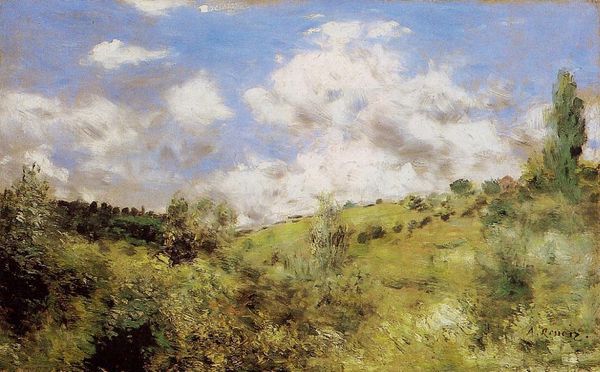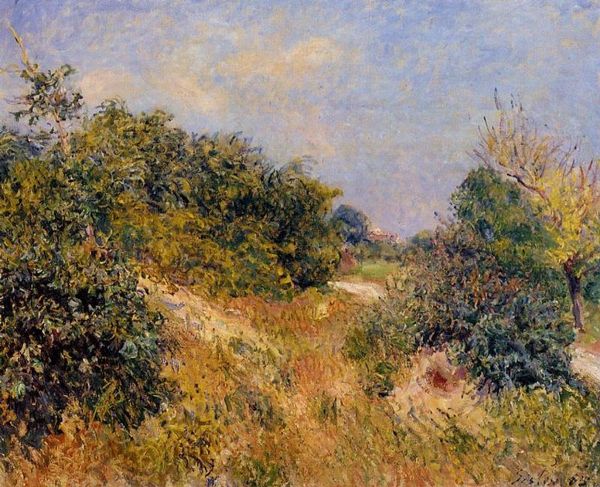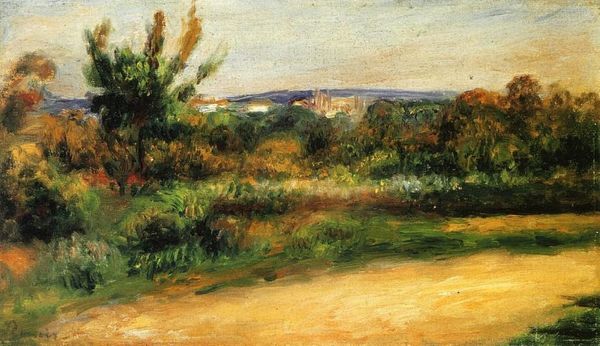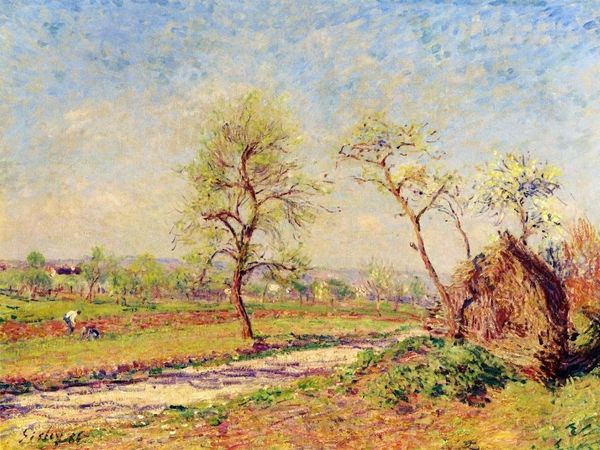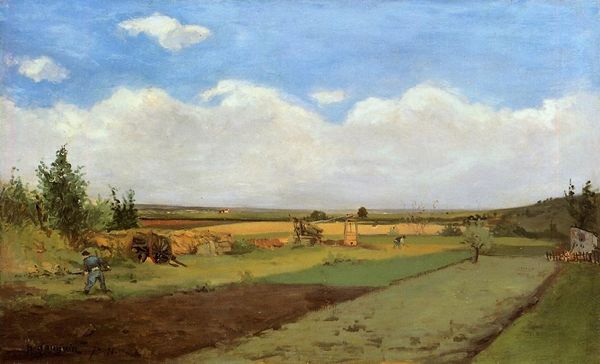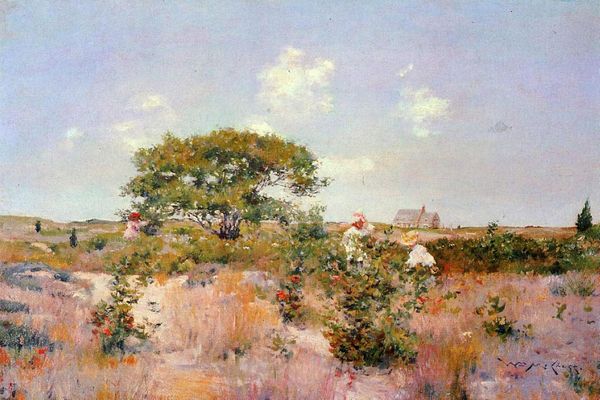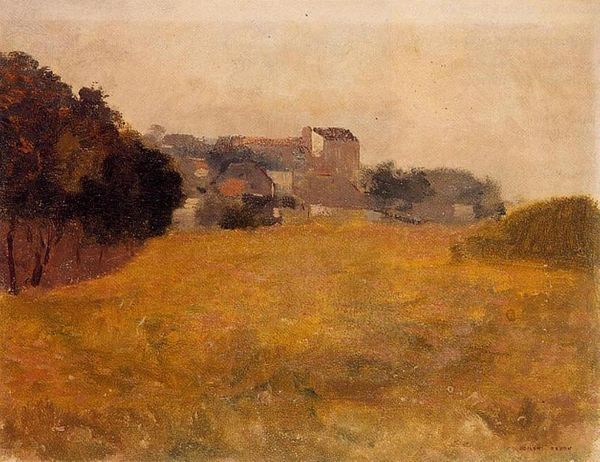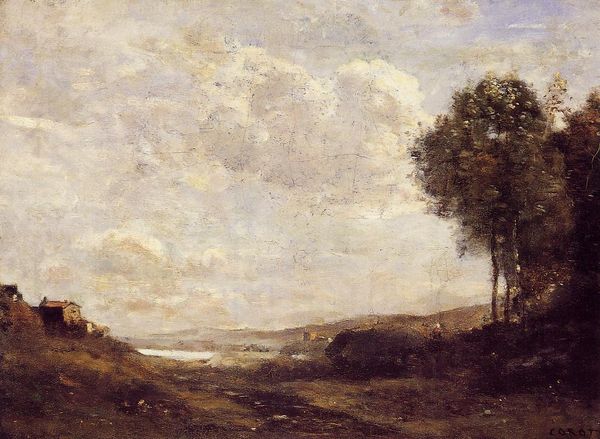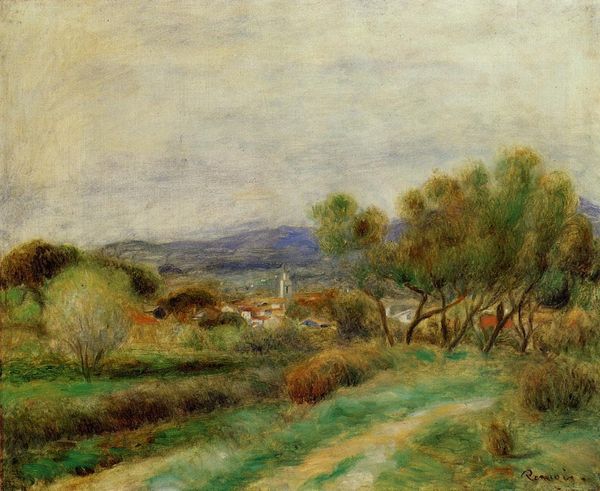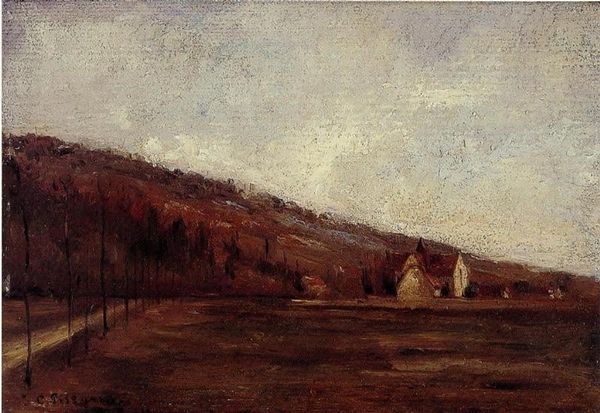
C leyran View of the Vignards 1880
0:00
0:00
henridetoulouselautrec
Musee Toulouse-Lautrec, Albi, France
painting, plein-air, oil-paint
#
tree
#
painting
#
impressionism
#
plein-air
#
oil-paint
#
landscape
#
oil painting
#
realism
Copyright: Public domain
Curator: Here we have Henri de Toulouse-Lautrec's "C leyran View of the Vignards," painted around 1880. Editor: It's evocative; the rough, thick brushstrokes create an immediate impression of rustic earthiness. Curator: Indeed. Notice how the plein-air approach allowed Lautrec to capture the immediacy of the scene. We're talking about oil paint applied with visible, energetic strokes, likely done on-site to reflect the fleeting light of the countryside. It embodies the growing market and preference of this medium amongst a bourgeois, able to consume art inspired by land cultivation. Editor: Focusing on form, there's a compelling juxtaposition between the foreground's tactile impasto and the relatively smoother sky, right? It seems to compress the pictorial space, flattening the traditional depth one might expect in a landscape. Curator: Right, and let’s consider Lautrec’s position within the French landscape tradition. His move from conventional techniques suggests a rising need of individualizing art for a customer looking for original works in response to an ever-growing massification of industrial products and images. Editor: That connects deeply to its visual structure. Look at the division of the canvas: a dominating foreground of dark greens and ochres gradually meets a field of muted greens, under a very subdued grayish-white sky. Curator: Furthermore, consider how this aesthetic relates to the economics of art at that time; Lautrec was creating commodities but drawing from raw landscapes, shaping what we see to appeal to those willing to purchase. Editor: From my standpoint, analyzing purely on aesthetics, it could also suggest that Lautrec found greater interest in the textured details, using tonal variation rather than linear precision. It's about exploring mood through compositional arrangement and its relation to the artist and nature. Curator: Absolutely, we see the fusion of his creative approach, availability of new tools of representation and the socio-economic factors that influenced artistic output and distribution. Editor: A thought-provoking confluence that definitely warrants continued exploration!
Comments
No comments
Be the first to comment and join the conversation on the ultimate creative platform.

